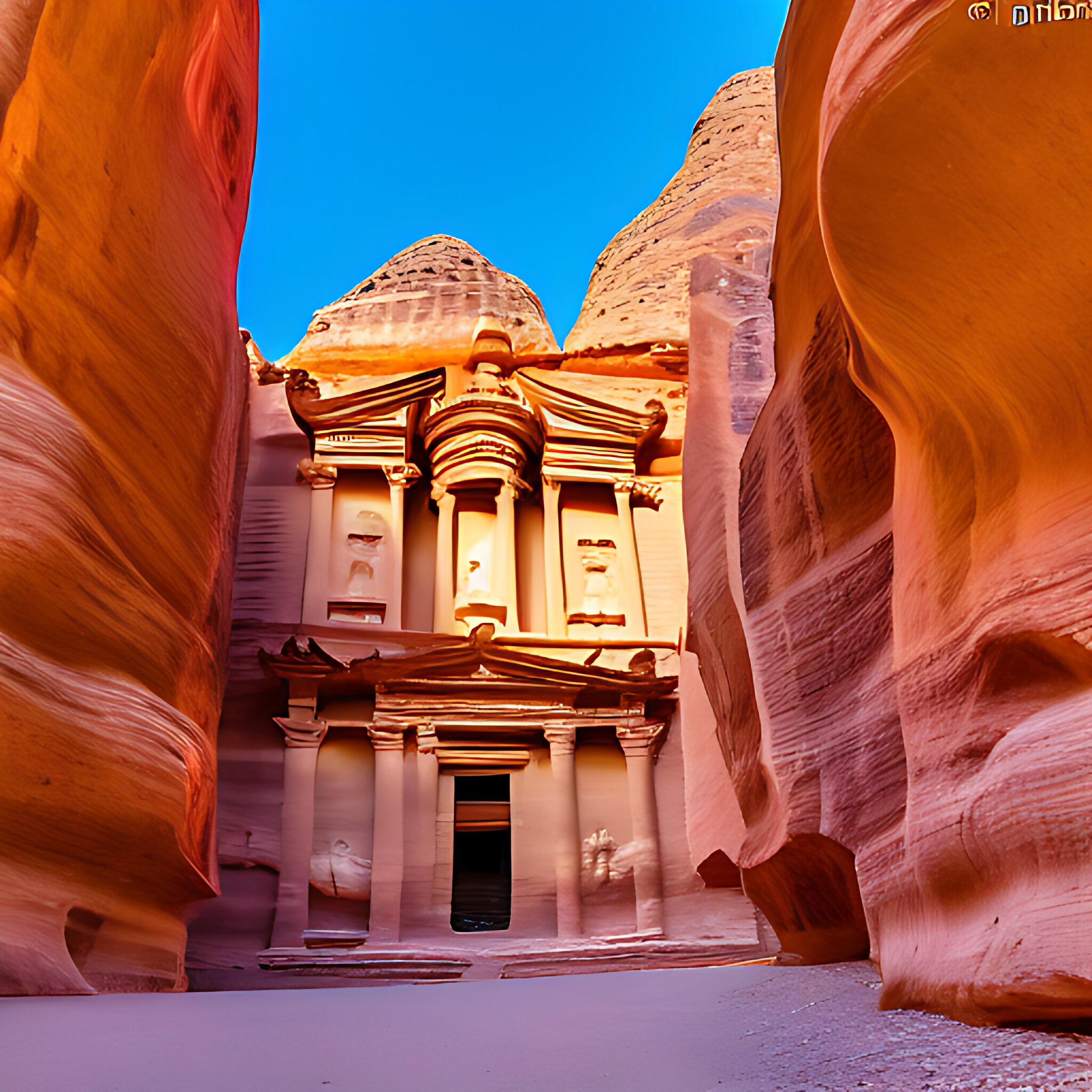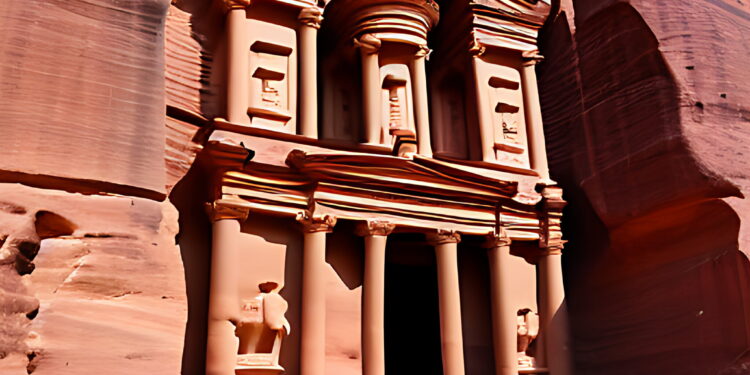Petra, nestled in the rugged mountains of present-day Jordan, the ancient city of Petra stands as a testament to human ingenuity and architectural brilliance. Known as the “Rose City” due to the pink hue of its carved rock facades, Petra is a UNESCO World Heritage Site and one of the New Seven Wonders of the World. Let’s delve into the fascinating history and awe-inspiring beauty of this legendary city.
Dating back to around 300 BCE, Petra was the capital of the Nabataean Kingdom, a prosperous civilization that controlled the trade routes of Arabia, Egypt, and Syria. Its strategic location at the crossroads of ancient trade routes made it a thriving center of commerce and culture. The city’s wealth was derived from its control over the lucrative incense trade, which flowed through the region.

What sets Petra apart from other ancient cities is its remarkable architecture. The Nabataeans, skilled engineers and craftsmen, carved intricate structures directly into the sandstone cliffs. The most iconic of these is the Treasury (Al-Khazneh), a magnificent temple-like facade that served as a royal tomb. Its sheer grandeur and intricate decorative details make it a sight to behold.
Beyond the Treasury, Petra is home to a vast array of structures, including the Monastery (Ad Deir), the High Place of Sacrifice, and the Roman Theater. Each structure showcases the artistic and architectural prowess of the Nabataeans, with elaborate carvings, columns, and intricate stonework.
Exploring Petra is like stepping back in time. The ancient city is accessed through a narrow gorge called the Siq, which stretches for over a kilometer. As you walk through the narrow pathway, the towering cliffs on either side create a sense of anticipation and wonder. And when you emerge from the Siq, the sight of the Treasury comes into view, leaving visitors in awe of its majesty.
But Petra is not just a historical site; it is also a living city. The Bedouin people, descendants of the Nabataeans, have called Petra home for generations. They have preserved their traditional way of life and can be seen selling handicrafts and offering camel rides to visitors. Their presence adds a unique cultural dimension to the experience of exploring Petra.
In recent years, Petra has gained international recognition and has become a popular tourist destination. Efforts have been made to preserve and protect the site, ensuring that future generations can continue to marvel at its beauty. However, the influx of visitors also poses challenges in terms of conservation and sustainable tourism.
Visiting Petra is an unforgettable experience that transports you to a bygone era. The sheer scale and beauty of the carved rock facades, combined with the rich history and cultural heritage, make it a must-visit destination for history enthusiasts and adventure seekers alike. Whether you explore the city by foot, on horseback, or in a horse-drawn carriage, the magic of Petra will capture your imagination and leave you with memories to cherish for a lifetime.













Comments 1